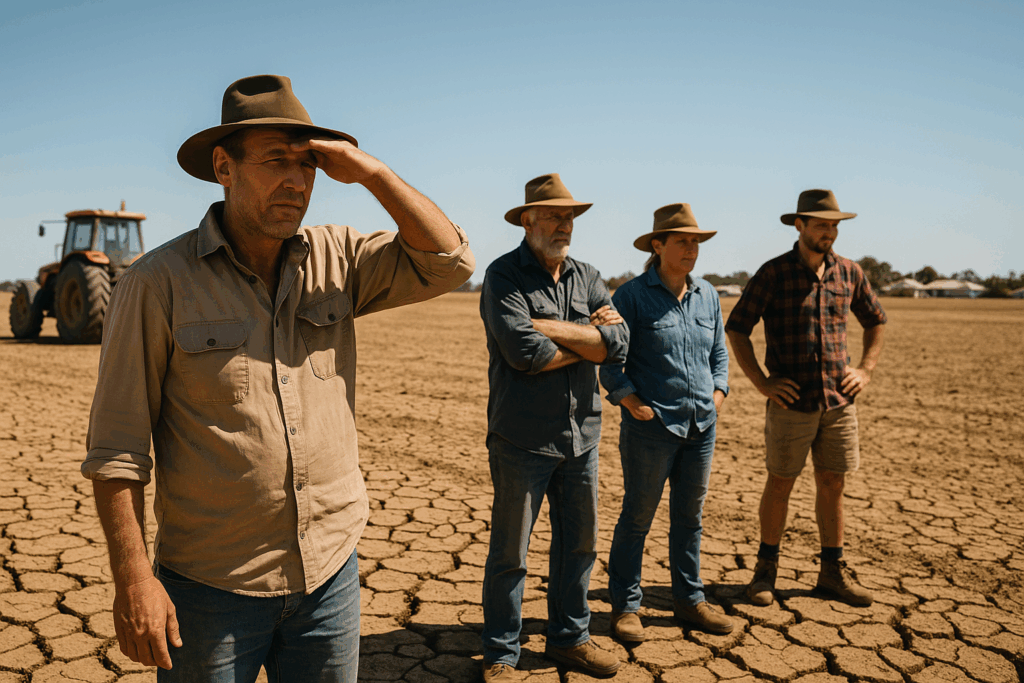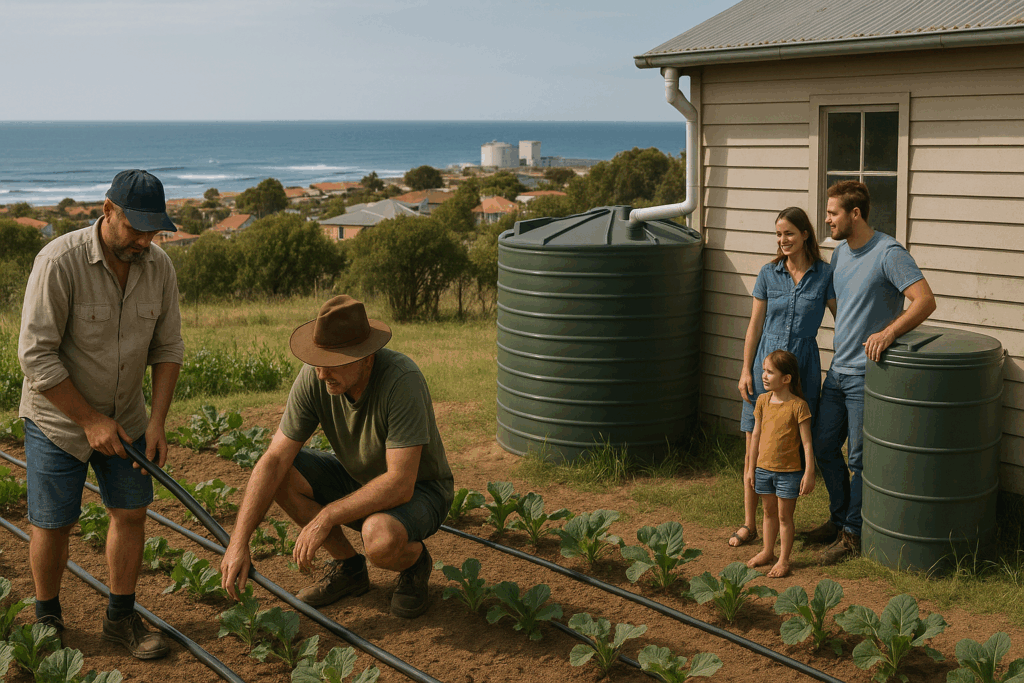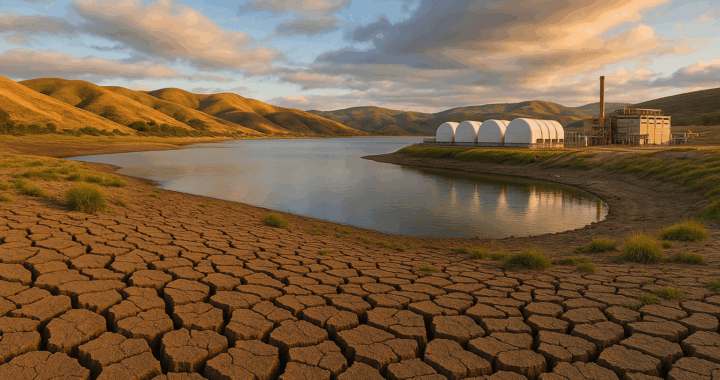If you’re watching your community struggle with water shortages while others face devastating floods, this story will resonate with you.
In this guide, we’ll break down Australia’s water resilience lessons into simple strategies. You’ll know how communities worldwide can prepare for both drought and flood cycles that are becoming the new normal.
We’ll cover:
- Building water security during a crisis
- Budget-friendly ways communities can improve water efficiency
- How to create systems that handle both water shortages and floods
- Real strategies that saved towns from going completely dry
- Practical steps your area can take starting today
We’ve seen dozens of communities across Australia revolutionise their water resilience using these same methods, from small farming towns to major cities.
Read on to learn more about how to build water security the Australian way.
Australia’s Water Scarcity Wake-Up Call
Australia faces some of the world’s harshest water realities, and the numbers tell a sobering story. Picture this: you’re living in a country that gets less rain per square kilometre than anywhere else people call home. This harsh reality means Australia’s water scarcity becomes a constant companion in all types of decision-making.

Here’s what drought and limited water supply look like on the ground:
- Drought cycles that refuse to break: During the Millennium Drought, entire towns survived on water deliveries for over a decade while watching their local supply disappear.
- Farmers watching fortunes evaporate: Agriculture suffered devastating losses as water availability plummeted, forcing some to abandon generations-old family farms.
- Cities rationing every precious drop: Permanent water restrictions in major urban centres made water supply management an essential survival skill.
- Communities forced to relocate entirely: When local water resources vanished completely, some towns had no choice but to close their doors forever.
Our findings show that the Murray-Darling Basin now runs at half capacity during drought years. But understanding the problem only scratches the surface. The real story lies in what caused this shift.
How Climate Change Rewrote Australia’s Water Rules
You know how Australians used to be able to predict their seasons pretty well? Well, those days are gone. Since 1910, temperatures have climbed 1.51 degrees, and that might not sound like much in hindsight, but it’s completely changed where and when rain falls across the continent.
The thing is, what used to be reliable seasonal patterns have become this wild swing between extremes. That swing has thrown the whole water cycle into chaos, leaving the old methods of managing water no longer effective. Take Queensland, for example. Back in May 2019, over 65.2% of the state was declared drought-affected. But then, get this, just three years later, devastating floods hit from February to April 2022.
So, climate change hasn’t just made the weather more unpredictable. It has rewritten the entire playbook for how Australia has to handle water resources. Instead of the familiar seasonal cycles, communities are facing conditions that ignore every historical pattern.
Naturally, this crisis forced Australia to get really creative with its solutions.
Innovative Water Moves Australia Made Under Pressure
There’s a saying that necessity is the mother of invention, and Australia’s water crisis became the perfect example. When communities faced the choice between innovation and going without water, they chose to get creative.

Let me walk you through the step-by-step process Australia used:
- Step 1: Infrastructure overhauls – Australia went all-in on technology. Cities built enormous desalination plants along the coast and created water recycling systems that could handle anything. In fact, Perth’s desalination plant produces 15% of the city’s water supply, proving the technology actually works.
- Step 2: Policy changes that made sense – What if water could be bought and sold like any other resource? The government created water trading systems that let farmers sell water rights to cities during droughts. Meanwhile, strategic water management became a national priority with real funding behind it.
- Step 3: Community-level water resilience – Every household became part of the solution. To begin with, tank rebates made rainwater harvesting affordable for families. Then, greywater reuse systems helped households stretch every drop they used.
- Step 4: Agricultural Revolution – Farmers didn’t just survive the crisis, they revolutionised their methods. They adopted precision irrigation technology that monitors soil conditions in real-time. At the same time, drought-resistant crops replaced water-hungry varieties, keeping food production stable even during tough seasons.
Now, the main question is whether other countries can pull off similar moves.
What the World Can Steal from Australia’s Playbook
Australia’s hard-won water wisdom offers a blueprint for other nations facing similar challenges. The strategies that saved Australian communities didn’t require magic, just careful planning and the willingness to try new approaches.

The adaptability comes down to three factors:
Adaptable Infrastructure Solutions
Desalination technology works anywhere with coastline access. Countries like South Africa and California built similar plants. This proves the method works in many places, even small coastal towns can use this technology.
Community-Level Water Efficiency
Household rainwater harvesting and greywater systems don’t need huge budgets. These methods are effective in various locations around the world. They help both dry areas in Africa and flood areas in Southeast Asia.
Agricultural Water Breakthroughs
Techniques developed in Australian fields to address local needs are now helping farmers worldwide. We’ve seen how these methods help farmers everywhere.
Precision irrigation and better crops have helped farming areas from California to Kenya. They use less water but still grow the same amount of food.
Building Water Resilience for Tomorrow
Water scarcity threatens billions worldwide, creating urgent challenges for communities everywhere. However, Australia’s experience with extreme droughts and floods shows that effective solutions exist. With careful planning and innovation, communities can build lasting water security even in harsh conditions.
This article explored Australia’s water journey from crisis to resilience. We covered infrastructure investments like desalination plants, policy changes including water trading, community programs for households, and agricultural innovations. These proven strategies are now spreading globally.
Our team at Easy510 brings water awareness and filtration solutions to communities worldwide. Join our mission to make clean, safe water accessible for everyone. Visit our website to learn how we can help.

